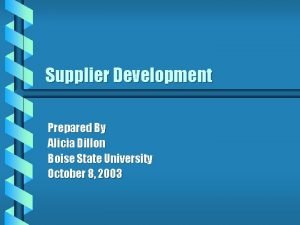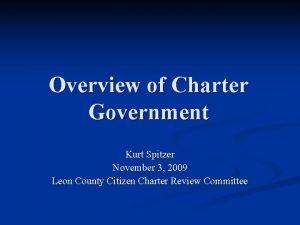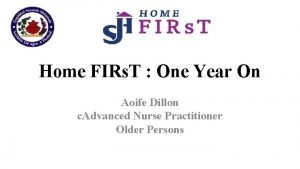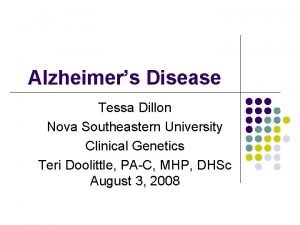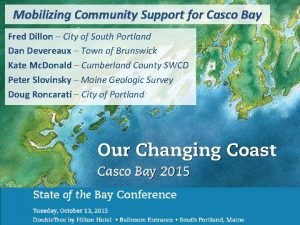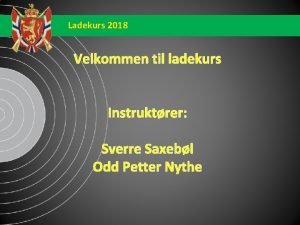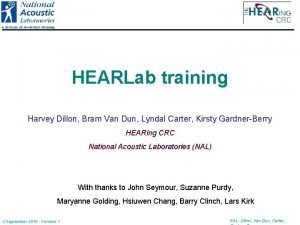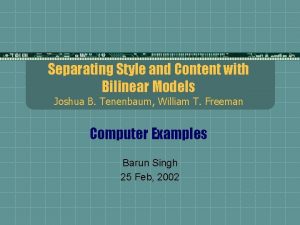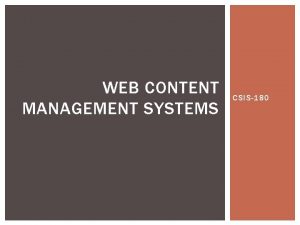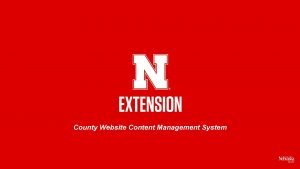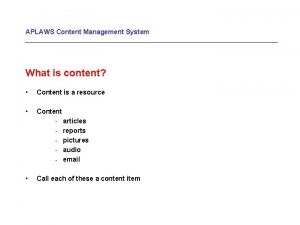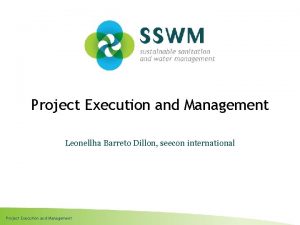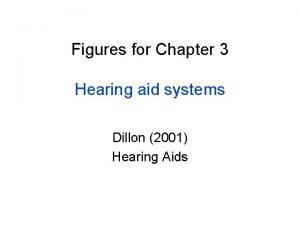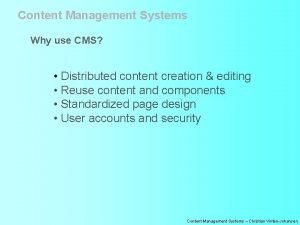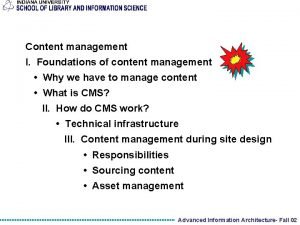Content Management Systems and 3 D Models Dillon















- Slides: 15

Content Management Systems and 3 D Models Dillon Wackerman, Ashley Thompson Stephen F. Austin State University wackermad@sfasu. edu

Project – Beginning • Approached by Dr. Zack Selden of the Center for Regional Heritage Research (CRHR) in October 2013 • Dr. Selden is an archaeologist with a specialization in East Texas Native American cultural objects, specifically Caddo ceramics • Part of his work with Caddo ceramics involves morphometrics, a project attempting to track the changes of particular shapes, designs and features of ceramics Kasi Dickerson, 2014

Project – Beginning • To gather the information for the morphometric analysis, Dr. Selden made 3 D scans at the item level • A 3 D scanning lab had been setup in the CRHR for several years • The setup • Zscanner 700 CX • VX Elements • Geomagic • The process … Robert Z. Selden, 2014

CRHR: Archaeology • Initially, the main file format he was outputting for display was. icf, which caused several difficulties in that IE, or another Microsoft product, was necessary • This format was one of potentially many that could be used, and it was soon revealed that we were going to need to find more compatible formats • • • • • . blend. dae (Collada). obj (Wavefront - open). vrml, . wrl (VRML - open). icf. mesh. prc, . u 3 d (Adobe/PDF). x (Direct X). lwo, . lws (Light Wave). 3 ds. max (3 DS Max). xgl. x 3 d (post VRML). skp (Sketch. Up). ply. ai (Illustrator). 3 dm, . 3 dmf (Apple). w 3 d. dxf (Auto. CAD). stl (stereolithography CAD) • • Often treated as import/export formats And, of course, data for a given model can be divided across several formats, considering color mapping and other functions

Initial Goals – CONTENTdm • Dr. Selden wanted a layout similar to that found for individual items in t. DAR • His goal was to combine in a single location the 3 D model, metadata and all accompanying files • Dr. Selden was familiar with CONTENTdm, which he wanted to use for his project, feeling that the display was approximate to that found in t. DAR • My response as to the possibility should have been “no”, but it wasn’t Digital Antiquity and the Digital Archaeological Record (t. DAR): Broadening Access and Ensuring Long-Term Preservation for Digital Archaeological Data. Francis Mc. Manamon, Keith Kintigh, adam brin. . 23 (2). 2010 (t. DAR ID: 376847) ; doi: 10. 6067/XCV 8 KS 6 QT 2

CONTENTdm & Existing 3 D Collections • Knowing that Dr. Selden wanted to use CONTENTdm – and thinking at the time of it being the only option then available – I did a search for related collections • I did find a CONTENTdm collection advertising 3 D images, yet what I found was really 2 D representations of 3 D objects University of Illinois at Urbana-Champaign. Sousa Archives and Center for American Music. Reference URL: http: //imagesearch. library. illinois. edu/u? /sousa, 1829

2 D Representation vs. 3 D Model • The 2 D representation does possess shading and lighting effects which give it representative features of a 3 D object • Yet, a 3 D model, displayed online, should (or must) exist alongside a set of tools or functions • The main for us being rotational (made possible through build up of polygons/triangles), which allows the possibility of any viewpoint of the model – additional: zoom, color mapping, lighting/shading

CONTENTdm – PDFs • While most file formats can be uploaded to CONTENTdm, this of course does not guarantee display • Yet, as seen earlier, PDF can be associated with 3 D models – really the embedding of a format – and PDFs can be uploaded to CONTENTdm • We were able to successfully upload PDFs with embedded 3 D models, yet some issues were presented: in every instance, the rotational tools did not transfer, only displaying a 2 D representation

CONTENTdm – PDFs • In most instances, due to browser versions or types, the 2 D representation would not even display • Nevertheless, in some instances, the PDF could be downloaded from CONTENTdm, opened in Acrobat and the rotational tools would transfer • This method was used for two to three weeks, with a tutorial being posted on the CRHR: Archaeology blog • Ultimately, though, the inefficient and cumbersome means to access prompted us to move on • We have however not taken down the 3 D PDFs, and are still working on issues of display

External Viewer(s) – Sketch. Fab • We turned next to using an external viewer • Options: flash, java applet, browser plugin (vrml), Blender, Unity 3 D, sculpteo, others • Ultimately chose Sketch. Fab • Other projects might require other applications, but we chose this for ease of use, upload and compatibility • Sketch. Fab process is relatively simple and an account is free; supports over 25 formats, including OBJ and VRML • Easily embedded via iframes/direct link

CONTENTdm – Sketch. Fab – Embed/Load Time Issues • Dr. Selden had, at the time, around 35 models to upload, with an expectation of at least doubling that number • Even with embedding 2 or 3 models per page, we were still expecting 20+ custom pages in CONTENTdm – with embedding 2 to 3 models per page being a compromise that had yet to be raised with Dr. Selden (diverging from the t. DAR ideal) • Also, in test runs, with the inclusion of just 5 custom pages, each with an individual model embedded, a lag load times were significant • Another drawback, for Dr. Selden and likely any other researcher, is that the files are hosted on Sketch. Fab’s server – the company does state that all files are private, but potential issues remain

Scholar. Works • Streaming Media field (not activated out of the box), located in the user/admin submission page • Through this field, a variety of formats/platforms are supported for embedding into documents, series and community pages – via embedly • There is an additional option for “Other rich media”, supporting a Sketch. Fab “direct link” – here: https: //skfb. ly. y. DLB • Iframes are not supported in Scholar. Works (the list of supported tags being fairly minimal)

Scholar. Works • We were still confronted with the issue of file security – including in this instance the addition of Bepress/Digital Commons as a host, along with Sketch. Fab • Yet, page load times were not affected by the number of models upload (around 20+) as of this presentation • Additionally, Scholar. Works gives Dr. Selden stats specific to these models and provides other tools already in place • Perhaps more important, the Sketch. Fab/Scholar. Works workflow can be entirely user-directed

Scholar. Works + CONTENTdm • Currently all original metadata, numbering about 55 fields, is in CONTENTdm along with various images and reports • One of the 55 fields links to Scholar. Works and individual 3 D models • The good: • Distributed workload • User-friendly/Set workflow/submission form • The bad: • Distributed workload • Access • File security

Solutions – Developments/Justifications • • We will have a staged instance of DSpace up sometime soon, and on this we will run through various templates for CRHR: Archaeology • • DSpace, or similarly open source repository, will likely bring us closer to the ideal that Dr. Selden – approximating the t. DAR layout – originally intended • • • Mobile Workflows • Project Tango Plugins/Support • Photoshop • Blender • Behance • deviant. ART • Unity • Portfolium/ALLYOU Direct Service Indirect Preservation (inclusion of 3 D printer) Marketing • Visual content strategy • The dynamic online experience (3 D approximation) demanded in product research – carryover
 Alicia dillon
Alicia dillon Dillon's rule
Dillon's rule Aoife dillon
Aoife dillon Home rule vs dillon's rule
Home rule vs dillon's rule Dillon's rule
Dillon's rule Alzheimer's punnett square
Alzheimer's punnett square Aboriginal symbols and meanings
Aboriginal symbols and meanings Fred dillon
Fred dillon Rcbs kruttvekt
Rcbs kruttvekt Bram van dun
Bram van dun Patrick dillon panama
Patrick dillon panama William dillon leetch
William dillon leetch Real content and carrier content in esp
Real content and carrier content in esp Content management system features
Content management system features Separating style and content with bilinear models
Separating style and content with bilinear models What is the difference between models and semi modals
What is the difference between models and semi modals
